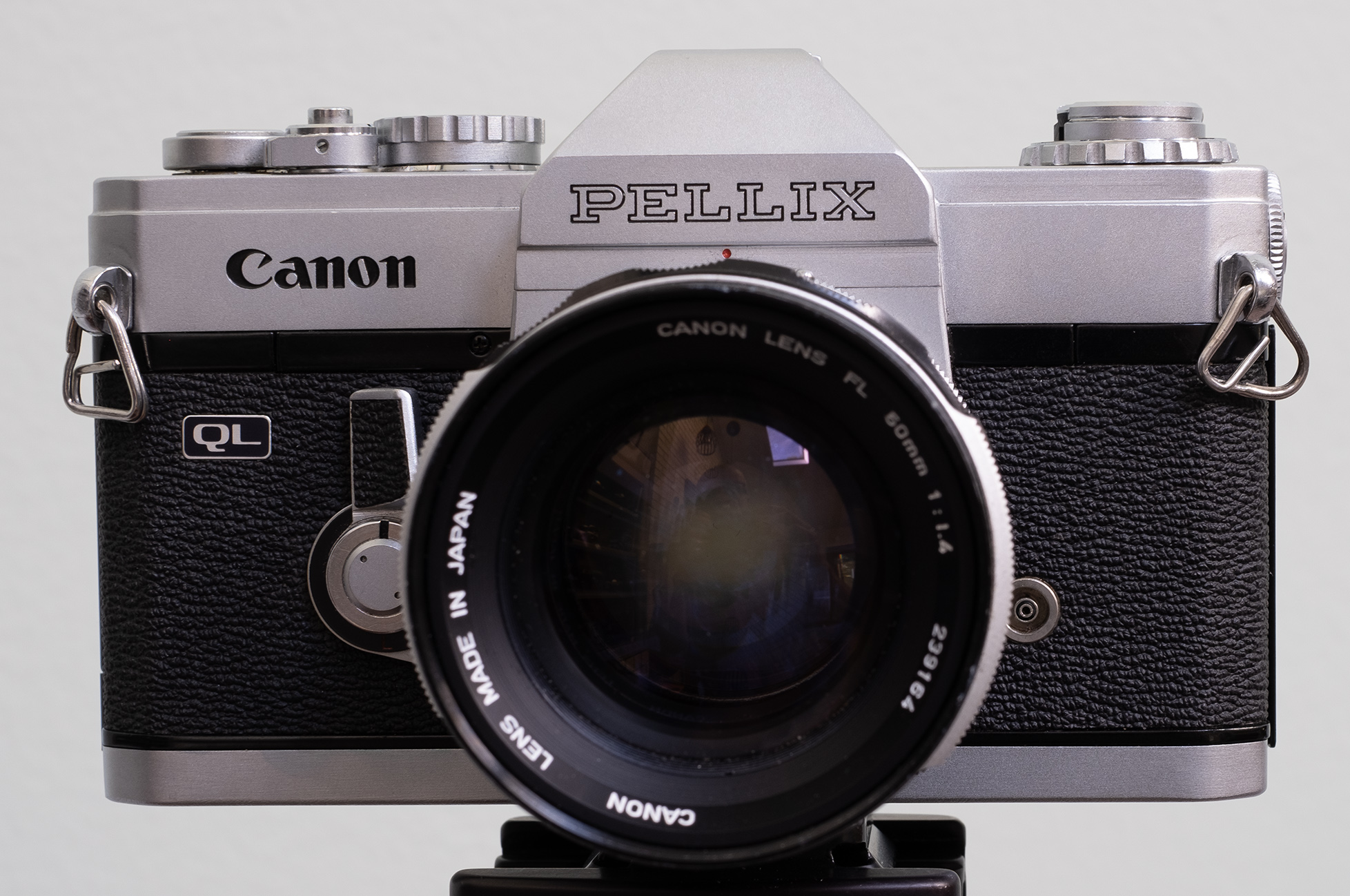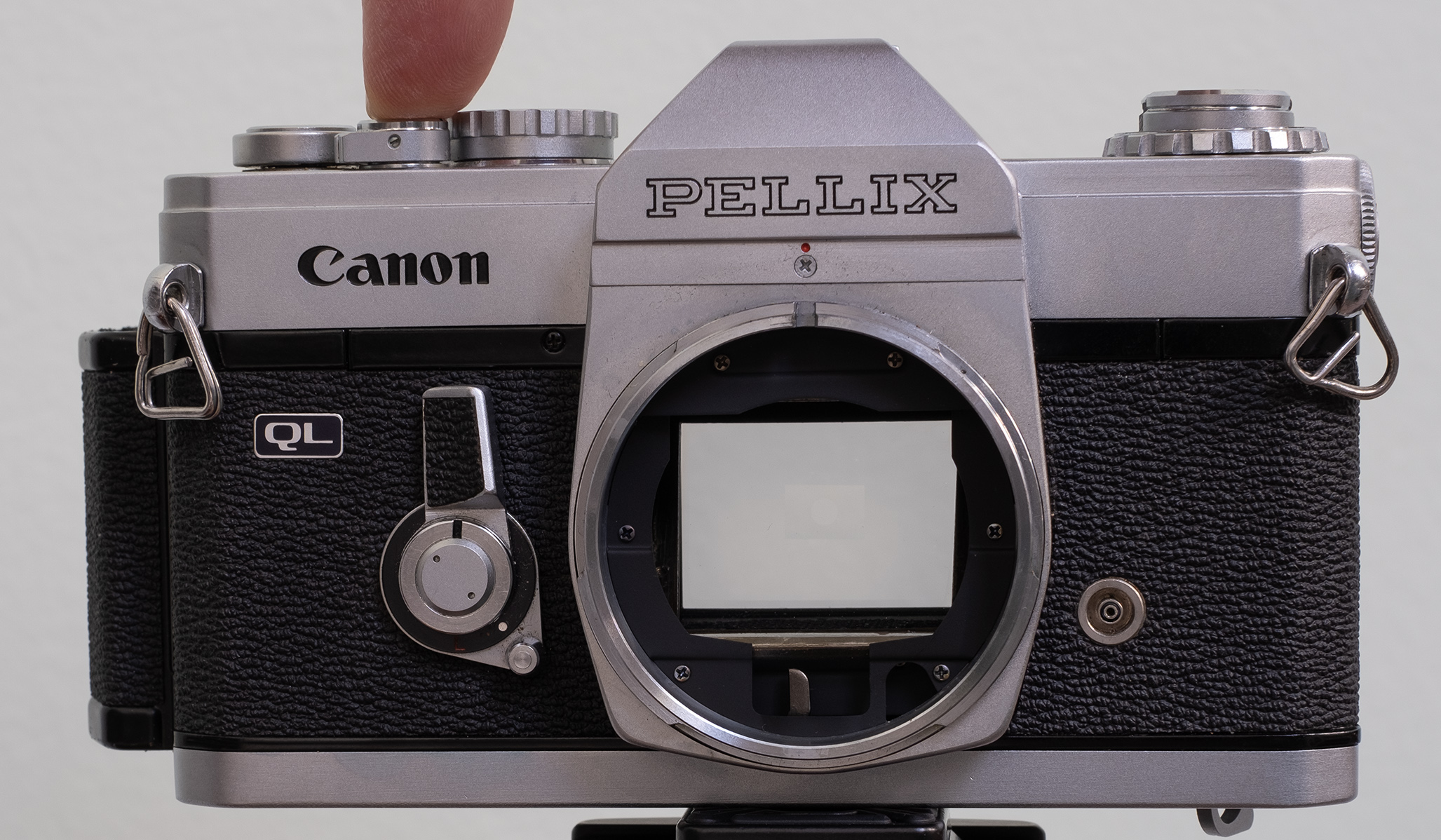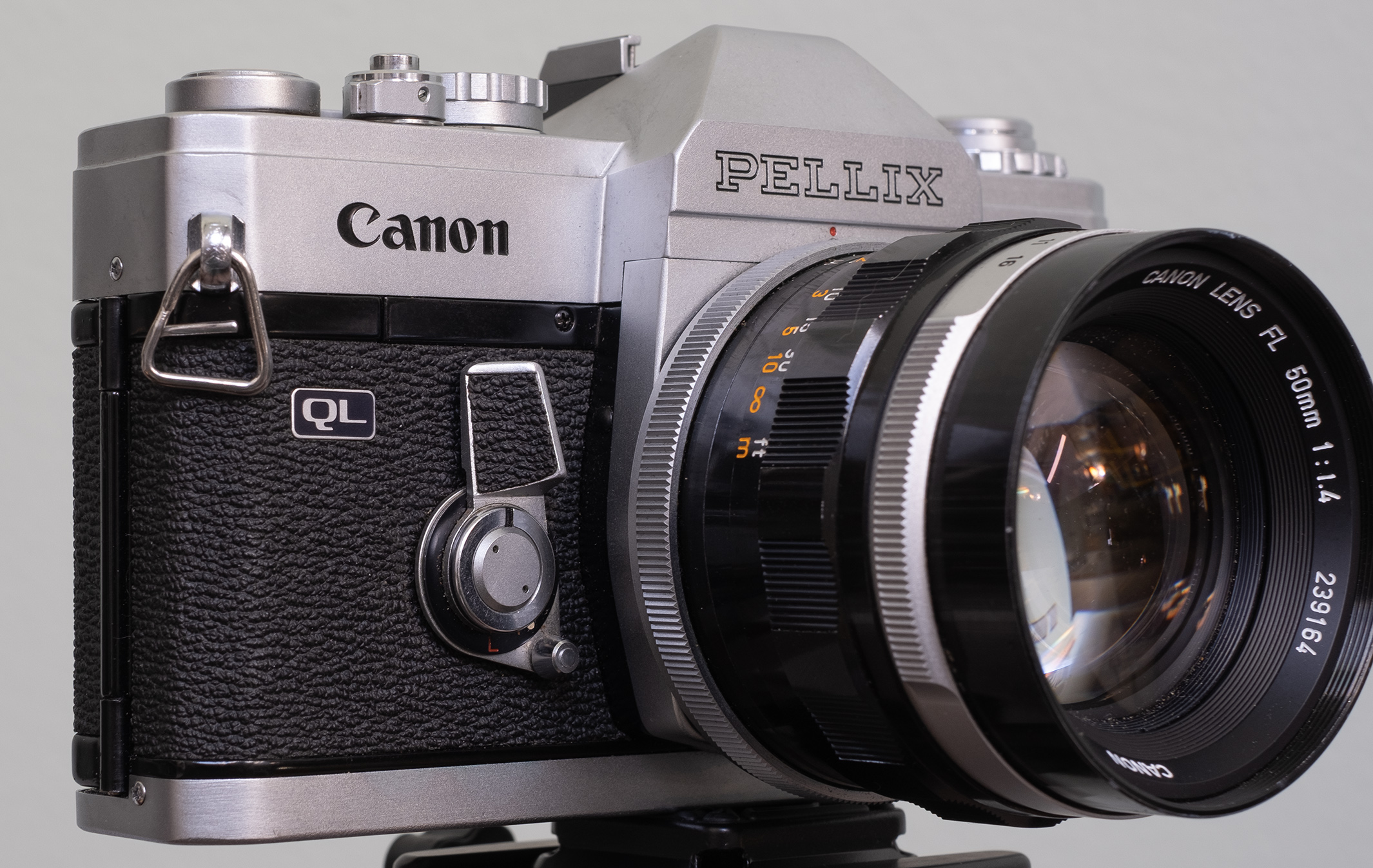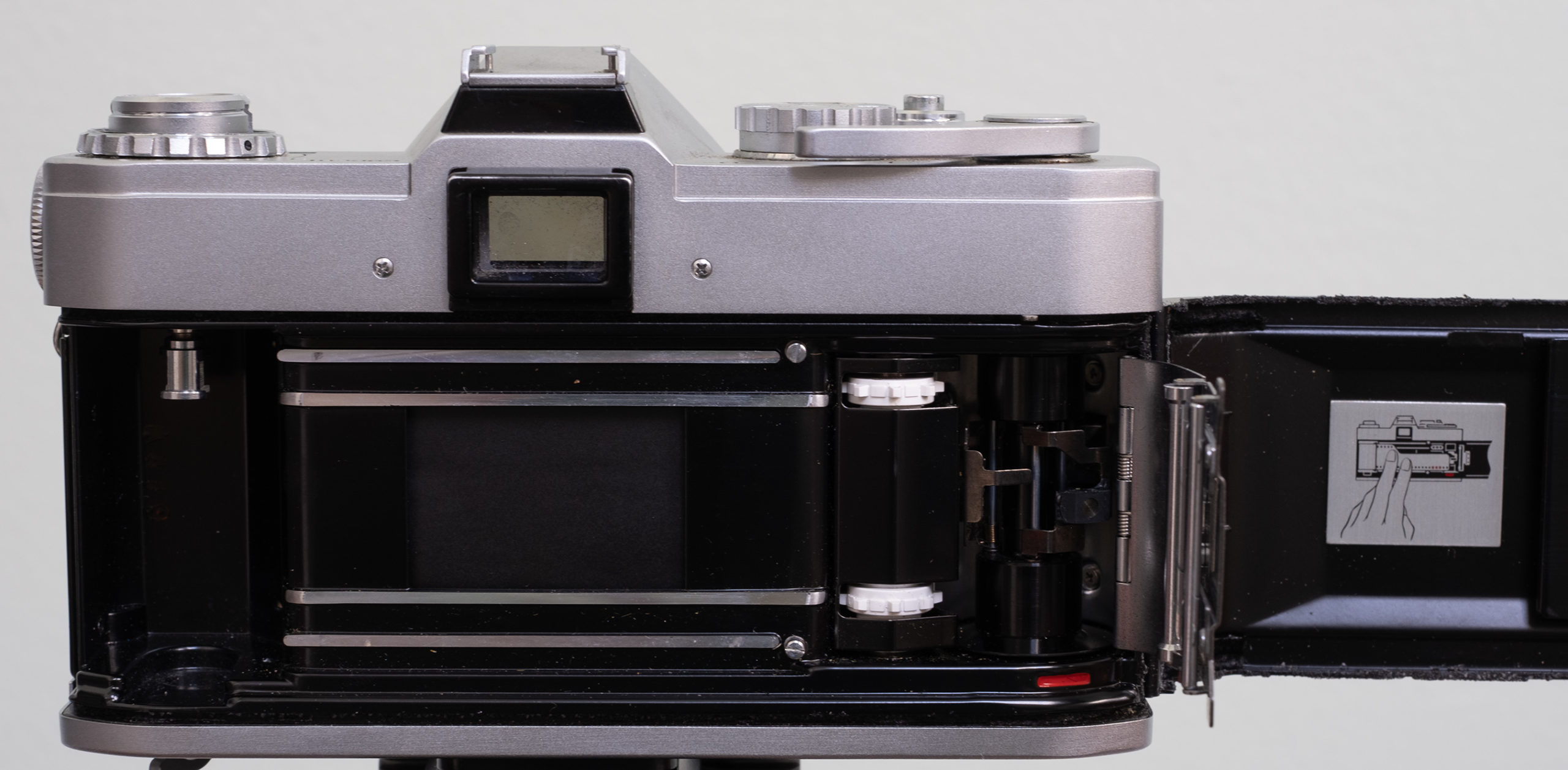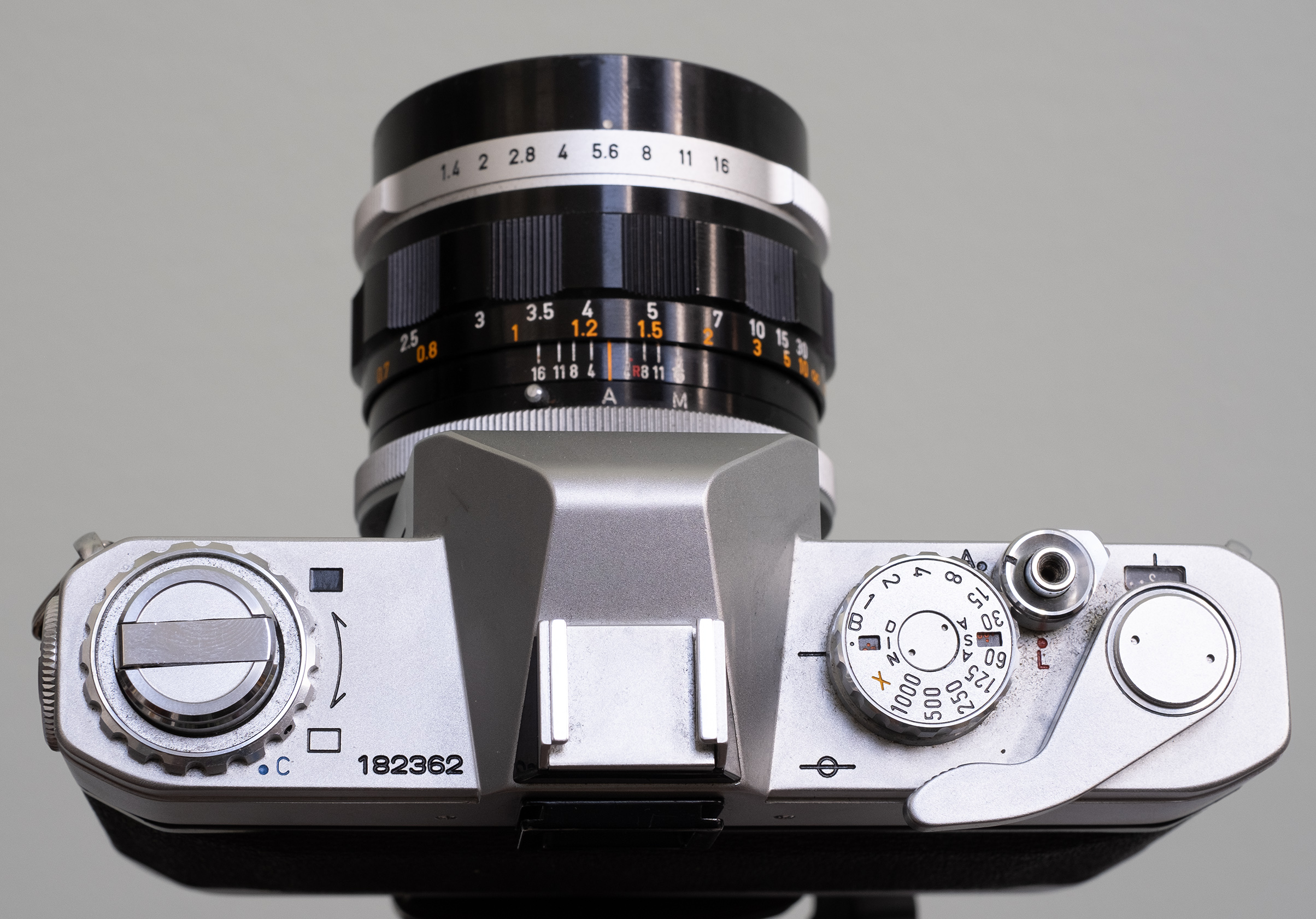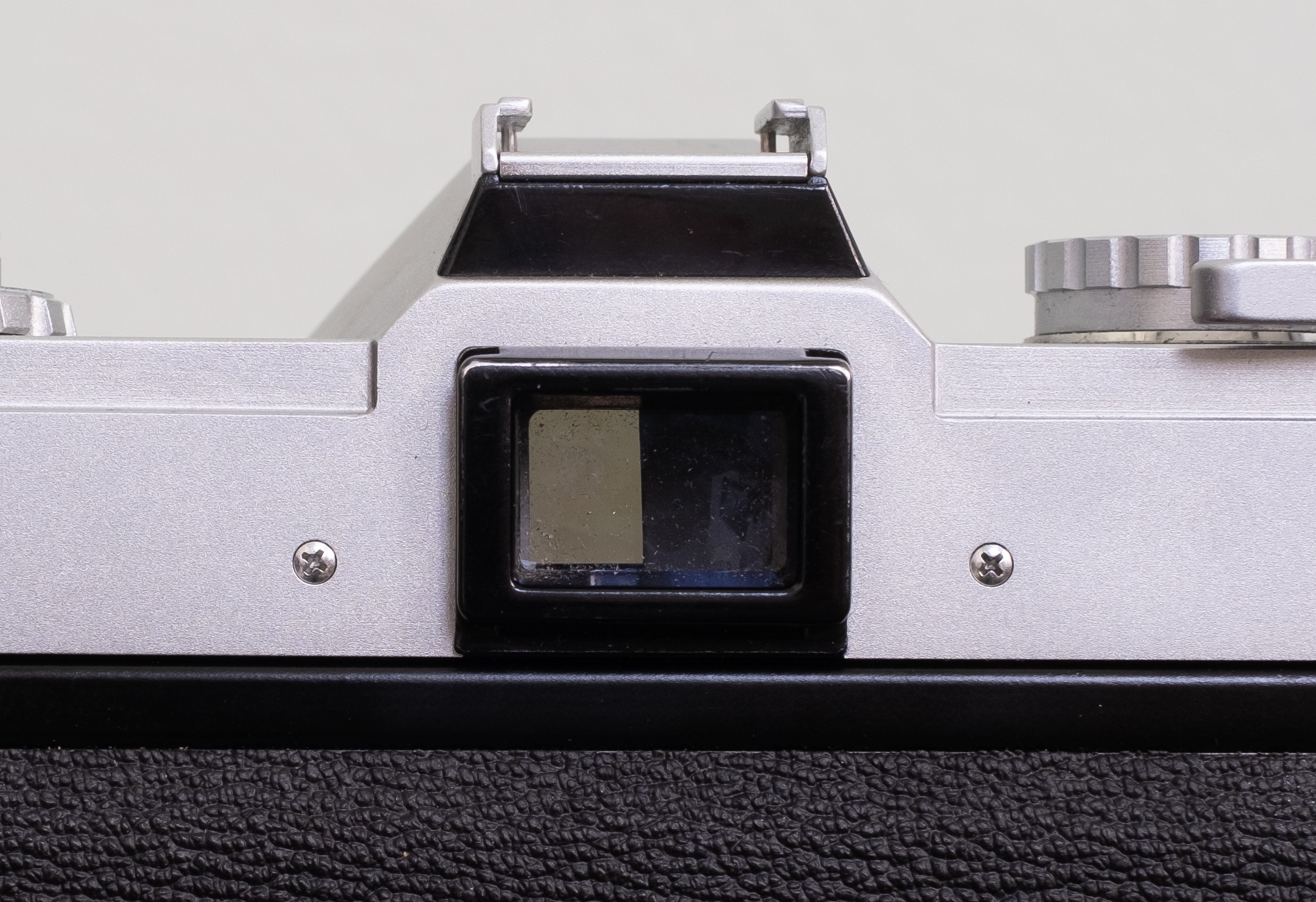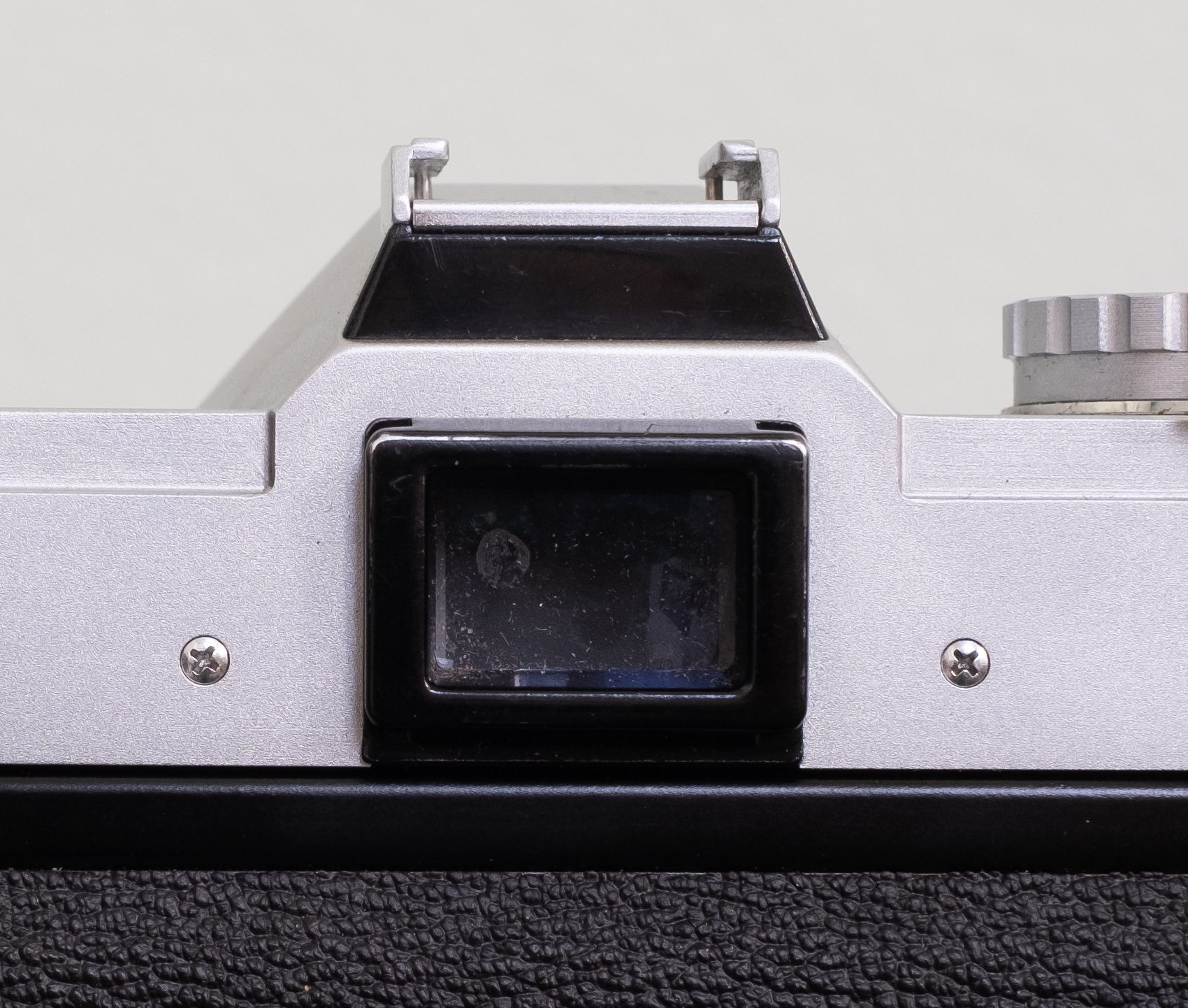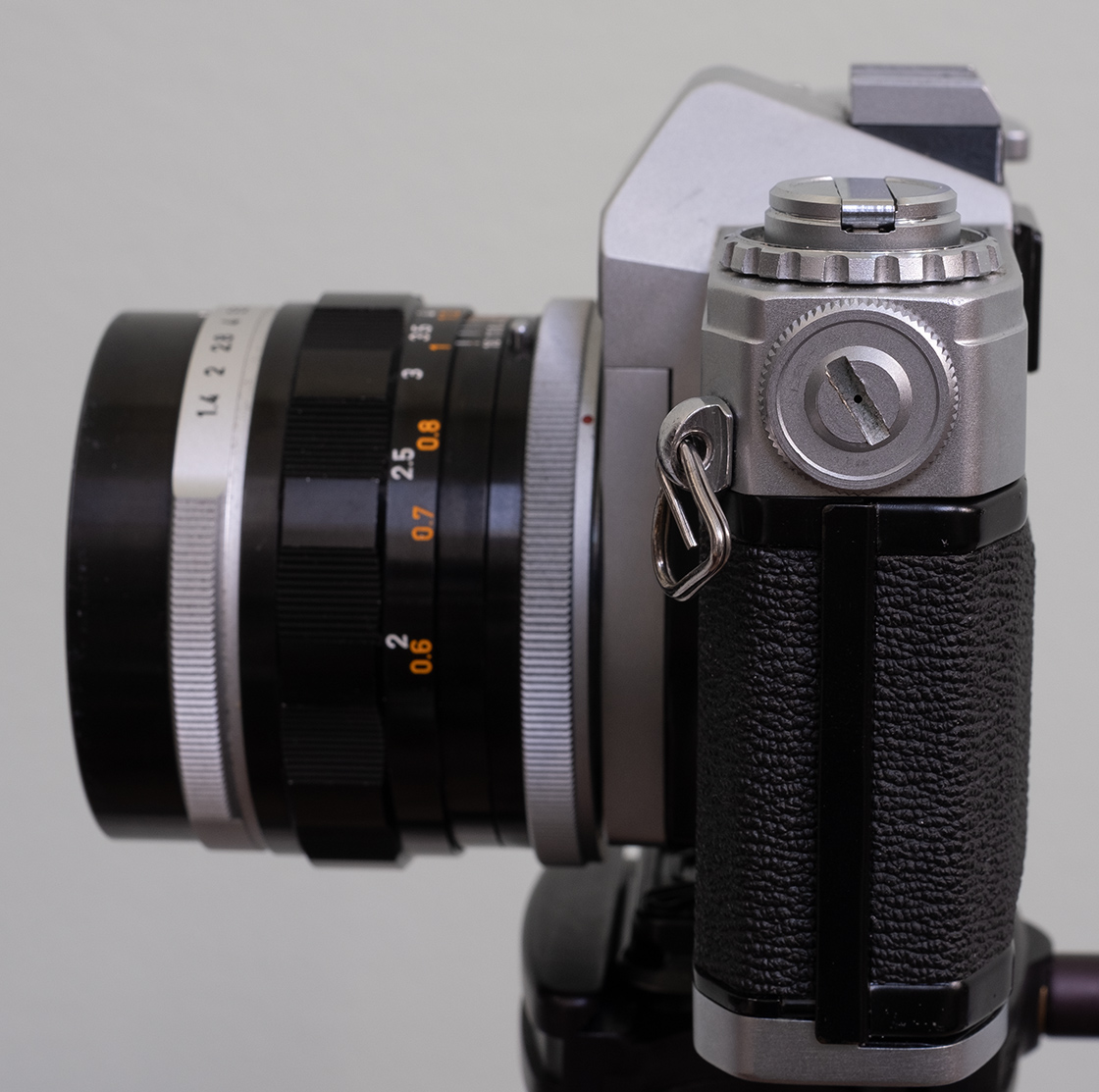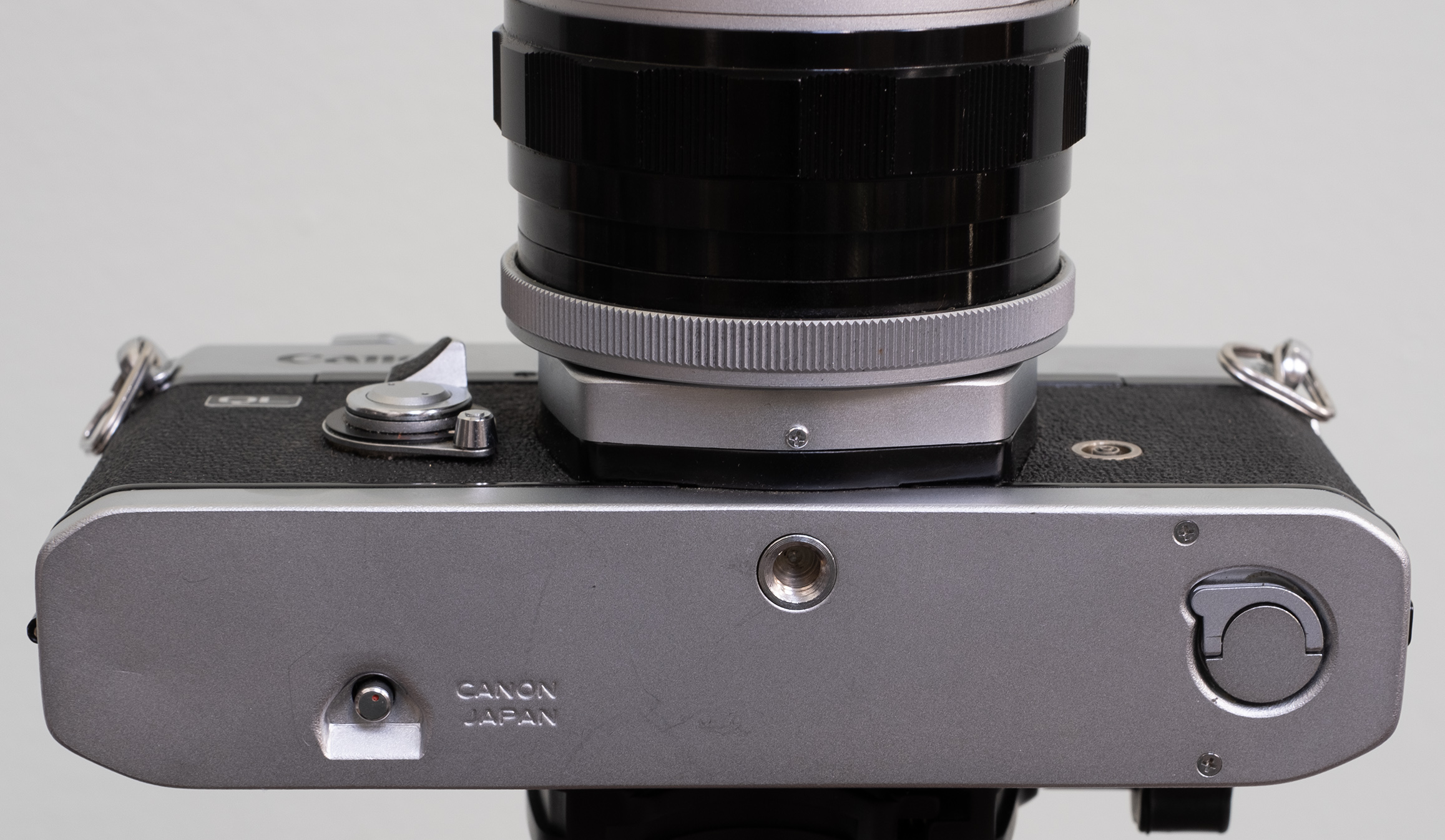Canon Pellix
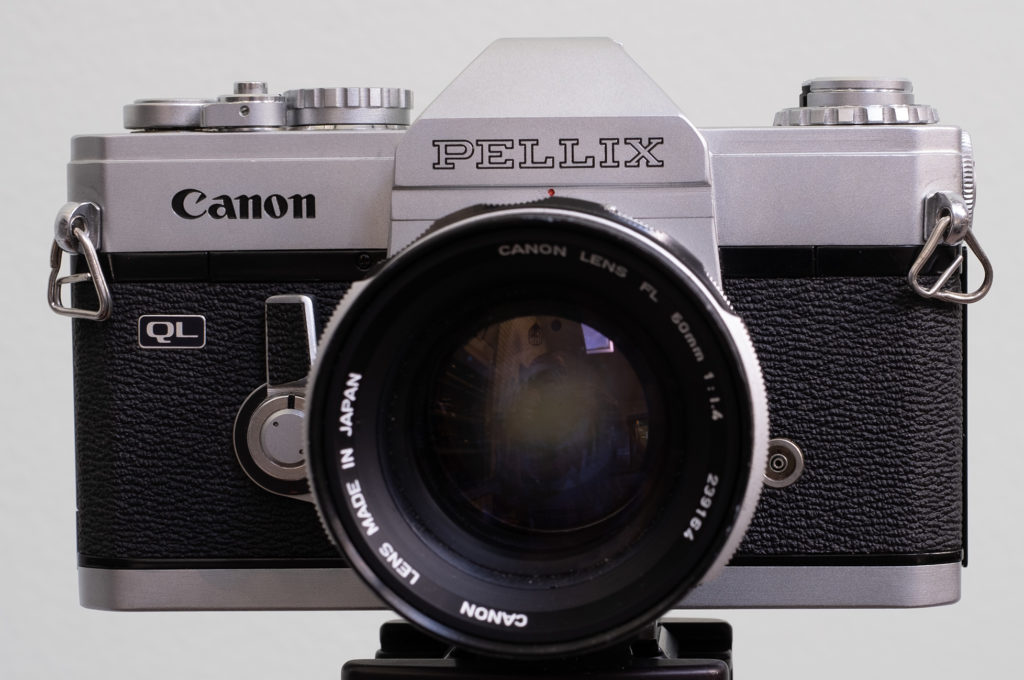
This is a definite odd-ball, and example of creativity attempting to solve an engineering problem: how do you capture light coming through the lens for metering purposes?
The Canon answer was to use a pellicle mirror; one which allows about 2/3rds of the light to pass through, and diverts the remaining 1/3rd to a light sensor. The mirror is fixed, and remains down during exposure. The CDS meter cell is moved into the path of the light by pushing the self timer towards the lens barrel, which also causes the aperture to stop down.
In order to keep light from the viewfinder from influencing metering, there’s even a blind that covers the eyepiece – operated by a ring around the rewind knob.
There are disadvantages to this approach, primarily that there’s about a 1/3rd stop loss in light transmission. To compensate for this the Pellix was supplied with a 55mm f1.2 lens – the museum sample has the FL50mm f1.4.
Advantages are several however:
- Less vibration due the absence of mirror slap
- Quieter operation
- No viewfinder black-out during exposure, making tracking shots easier
- The rear element of lenses can protrude further into the body, permitting a compact design


